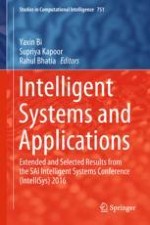This book addresses a wide range of topics in areas of intelligent systems and artificial intelligence and their real-world applications. The 22 chapters have been selected from the 168 papers published in the proceedings of the SAI Intelligent Systems Conference 2016 (IntelliSys 2016), which received highly positive feedback in peer reviews. The IntelliSys 2016 conference was held in London on 21–22 September 2016.
This fascinating book offers readers state-of-the-art intelligent methods and techniques for solving real-world problems along with a vision of future research.
